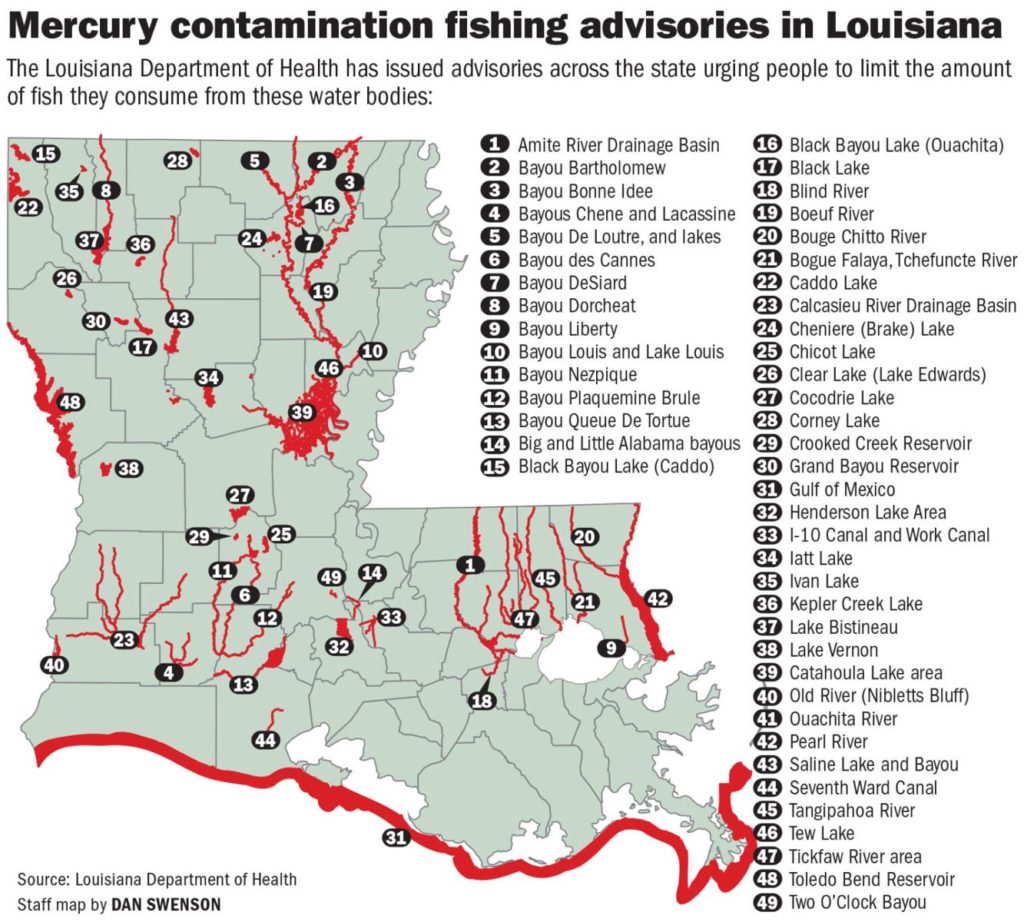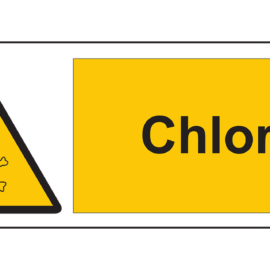
Mercury in our lakes? Sadly, yes and they are finding more lakes with it in the water.
Despite a shrinking budget and an uncertain future, Louisiana’s fish testing program is still finding waterways where fish might be unsafe to eat. The Department of Health announced this week that Little Alabama Bayou, about 20 miles west of Baton Rouge, has fish with unsafe levels of mercury, a heavy metal that can stunt brain development and inflict long-term damage on the kidneys and heart. The bayou runs through the Sherburne Wildlife Management Area, a popular fishing destination. The new advisory extends from the bayou’s headwaters near East Krotz Springs to its confluence with Big Alabama Bayou. Women of childbearing age and children younger than 7 are advised to eat no more than one meal per month of the bayou’s bowfin and largemouth bass. Black crappie and drum from the bayou should be eaten no more than three times per month.
nola.com

There are just under 60 warnings out on our lakes and coastal waters including tuna, amberjack and other fish species from coastal waters, catfish from the Tangipahoa and Tchefuncte rivers, Tickfaw River crappie and several fish in the Amite River Basin. The DEQ takes fish samples and have not added any body of water since 2016. Mercury comes from oil and chemical plants as well in wood treatment centers and pipeline pressure monitors.
The environmental department’s fish testing program was eliminated in 2008 then revived with a smaller staff and budget in 2015, when the agency received a one-time infusion of $1.5 million that had been paid by power company NRG Louisiana Generating in lieu of a fine. Last summer, department officials estimated the money could support the program for a few more months or a year. This week, officials said there’s still money left but could not say how much or how long it would sustain the program. Al Hindrichs, manager of the testing program, said the department has considered asking state leaders to fund the program. “We’ve been promised general fund money,” he said. “I hope it comes through.” Before the department cut funding to the program, the testing team averaged 100 site visits per year. The revived program has averaged about 40 per year since 2016.
The pandemic and “stay at home” orders have increased the use of the lakes for activities as you could be alone and still recreate. The number of fishing licenses went up in March-June 2020 by 50%. The new anglers were both the unemployed who were looking for food as well as others working from home with time on their hands. Many of the fish listed are “trash fish” but are stable foods in poor and minority communities.



